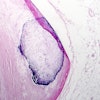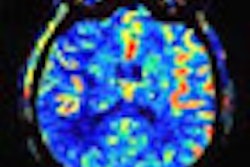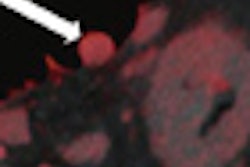Routine hospitalization for neurological observation of children who've had minor blunt head trauma is unnecessary when cranial CT exam results are normal, according to a study of more than 13,500 children that was published online June 17 in the Annals of Emergency Medicine.
Blunt head trauma is the leading cause of death in children older than 12 months. However, when a child has normal results after a cranial CT exam, requiring observation within a hospital or ordering additional diagnostic exams offers very little value, according to researchers from the University of California, Davis (UCD) Health System's department of emergency medicine.
Out of a total of 13,543 children admitted to hospital emergency departments with minor blunt head trauma, only 21 patients (0.0015%) had abnormal results on a subsequent cranial CT or MRI exam. None of these children required neurosurgical intervention.
The study results could reduce healthcare expenses by eliminating both inpatient hospital costs and exposure to other health risks, such as hospital-acquired infections, stated senior author Dr. Nathan Kupperman, professor of pediatrics and emergency medicine, and colleagues.
Twenty-five hospitals throughout the U.S. that are members of the Pediatric Emergency Care Applied Research Network (PECARN) participated. All children in the study had an initial Glasgow Coma Scale (GCS) score of 14 (7%) or 15 (93%) and a normal initial cranial CT scan. The GCS scoring system is numbered from 1 to 15, with the lowest number representing the highest likelihood of coma. CT and MRI exams were considered to be abnormal if they showed any skull fracture, pneumocephalus, cerebral edema, or intracranial or diffuse axonal hemorrhage.
Outcomes in patients categorized as GCS 15
|
Outcomes in patients categorized as GCS 14
|
Injuries identified on subsequent exams for both categories of patients predominantly included skull fractures, cerebral contusion, cerebral edema, subarachnoid hemorrhage, and subdural hematoma. Overall, only 0.005% of GSC 15 patients and 1.3% of GCS 14 patients who were hospitalized had these injuries identified.
More hospitalized patients in both categories underwent follow-up exams, according to lead author and co-investigator, Dr. James Holmes, professor of emergency medicine at the UCD School of Medicine. He and his colleagues attributed this to accessibility to modalities and the ease of performing the exams.
The authors pointed out that hospital admission of children with additional injuries, and with symptoms potentially indicative of other injuries, such as vomiting, is appropriate even if they have negative findings from an initial CT scan. In fact, 18% of the children hospitalized in this study were vomiting in the emergency departments.
But they expressed concern that many U.S. medical centers have been hospitalizing children solely for neurologic observation. The findings of this study will hopefully reduce this practice.




















